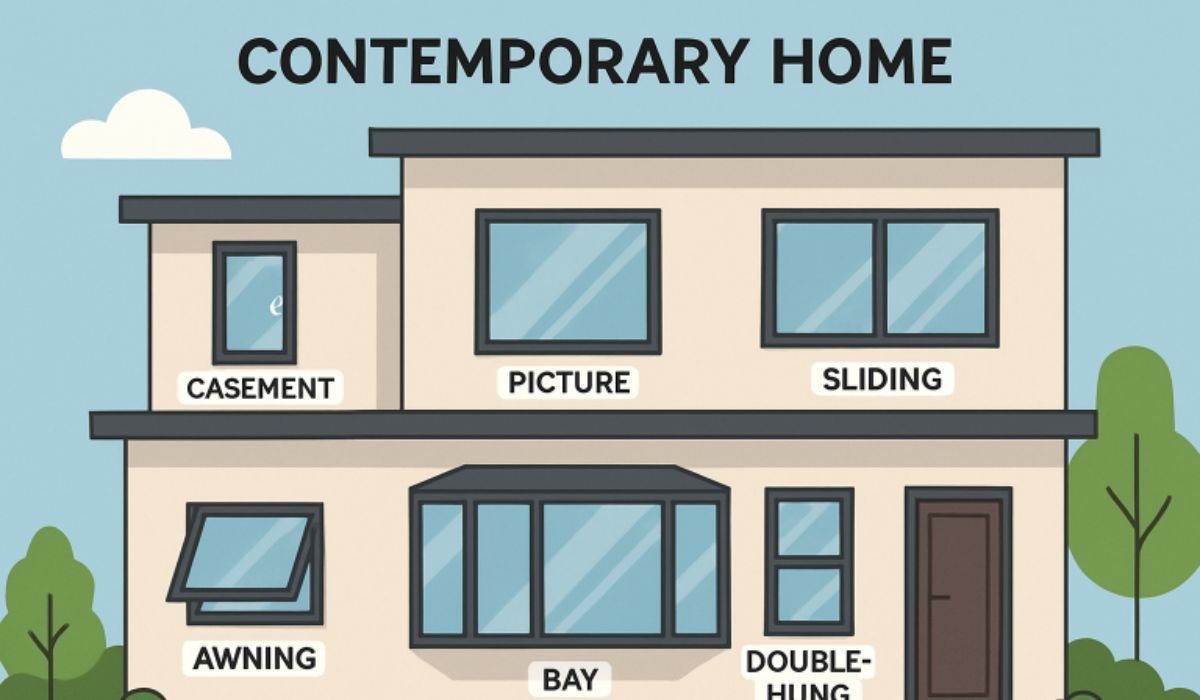Choosing the ideal window involves considering factors such as operation, materials, energy-saving features, and how the style complements your home’s architecture. Whether you’re remodeling or building new, understanding the various window types enables you to make informed choices that perfectly fit your needs and aesthetic preferences.
Windows are vital for a home’s appearance and comfort. They let in light and ventilation, influence room ambiance, and boost curb appeal. Modern windows go beyond traditional styles, offering features like improved energy efficiency and better outdoor views to suit contemporary lifestyles. Homeowners in North Texas, for example, looking to combine sleek design with top-tier performance, can explore options from Renewal by Andersen Dallas for inspiration and expert advice. Additionally, advancements in window technology now offer better insulation, noise reduction, and UV protection, helping create quieter and more energy-efficient living spaces. Choosing the right materials and designs can also significantly reduce maintenance needs while enhancing the long-term value of your home.
Casement Windows
Casement windows are hinged on one side and open outward, offering uninterrupted views and adequate ventilation. Their modern, streamlined aesthetic makes them a popular choice for contemporary homes. Because they form a tight seal when closed, they are highly energy-efficient and are often recommended for rooms where air circulation is essential—such as kitchens and bathrooms. Their simple operation and ability to maximize outside views can help create a connection with outdoor spaces, further aligning with the open-concept trends in modern home design.
Sliding Windows
Sliding windows glide horizontally along a track, making them the go-to style for locations with limited exterior space where traditional windows that open outward aren’t feasible. They deliver broad, expansive views while maintaining ease of access and low maintenance needs. Their minimalist lines contribute to the clean, clutter-free look favored in modern architecture. Ideal for living rooms or large wall spaces, sliding windows blend seamlessly into the interior and exterior design.
Picture Windows
Picture windows are stationary and do not open, but they serve an important decorative function. Designed to frame striking outdoor vistas, they bring an abundance of natural light into your interiors, creating a seamless look when paired with operable windows. Because they are fixed in place, picture windows also offer exceptional insulation, which can help reduce energy costs and make indoor climates more comfortable throughout the year. These windows are especially suited to areas where ventilation is not a concern, but maximizing daylight and exterior views is desired.
Bay and Bow Windows
Bay and bow windows extend outward from the home’s façade, providing a panoramic dimension to both the interior and exterior. A bay window typically features three panes set at angles, while a bow window is composed of four or more panes, forming a gentle curve. These styles add architectural flair, create a cozy nook perfect for seating or display, and give the illusion of more space—often making smaller rooms feel larger and airier. Because they protrude from the house, bay and bow windows also allow sunlight to enter from multiple angles, flooding rooms with natural light.
Awning Windows
Awning windows are hinged at the top and swing outward from the bottom, allowing for easy ventilation. They are beneficial for letting in fresh air during rainy weather because their design prevents water from entering the home even while they are open. Their compact size makes them ideal for use in bathrooms or above doors, and they can be positioned high on walls to provide privacy and ventilation without compromising daylight. Awning windows are often chosen for modern homes that require strategically placed airflow but value security and privacy.
Double-Hung Windows
Double-hung windows are beloved for their classic style and flexible functionality, as both sashes can slide up and down. This enables homeowners to control airflow precisely, making cleaning the glass safer, especially from the inside. Their enduring design adapts well to any architecture, and with today’s advancements, double-hung windows are now available in a range of modern finishes and materials that suit contemporary tastes.
Frame Materials and Colors
The choice of window frame material can significantly affect both the longevity and the visual appeal of your windows. Modern options include wood for its timeless warmth, aluminum for its strength and minimalist appeal, vinyl for its affordability and ease of maintenance, and fiberglass for its leading-edge durability and energy efficiency. Innovations in window manufacturing have also led to a broader selection of colors and finishes. At the same time, whites and neutrals remain standard, bold black frames and deep blues or greens are increasingly being used to create a striking, modern contrast—especially against white or light-colored exteriors.
Energy Efficiency and Smart Features
Modern windows reduce energy use and increase comfort with double- or triple-pane glass, Low-E coatings, and insulating gases, keeping interiors warmer in winter and cooler in summer. Some incorporate smart technology, such as sensors or tinting, allowing for remote control via an app or voice. They can be integrated with smart home systems. For insight into emerging smart window technologies, this Wired article provides an overview of some of the latest innovations.
When selecting new windows, consider their impact on architectural style, comfort, and utility bills. By understanding the wide range of available window types, materials, and features, you can confidently choose the perfect fit for your modern home—today and for years to come.
Final Thoughts
Windows are more than architectural elements—they define how a home feels, functions, and connects with its surroundings. From energy-efficient casement styles to elegant bay designs, each window type offers a unique balance of form and practicality. Thoughtful selection of materials, finishes, and smart features not only enhances comfort and aesthetic appeal but also contributes to long-term sustainability and value. By choosing windows that align with your lifestyle and design vision, you create a home that’s both visually inviting and built for lasting performance.
YOU MAY ALSO LIKE: The Ultimate Guide to Choosing the Perfect Sofas for Your Living Room

